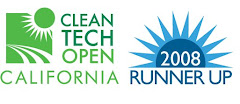Thursday, February 26, 2009
Act Now!
The Reality Campaign strikes again with a Coen Brothers-produced infomercial. My only quibble with the Obama "Don't Call It State of the Nation" speech was the multiple mention of "Clean Coal Technology" and the lack of "Geothermal (and Ground Source Heat Pump)" punctuation to the oft-cited "Solar & Wind" citations.
Wednesday, February 25, 2009
3.9 Quadrillion BTUs a Year
A new report written by

On behalf of

It isn’t (or wasn’t) everyday that that the US Government produces an in-depth and wide-ranging report that lends welcome credence to both the GroundSource Geo cause and business plan. But, as fortune would have it, in December, 2008, Patrick J. Hughes at OakRidge National Laboratory released a report sponsored by the US Department of Energy in which he very much does both.
Although Mr. Hughes acknowledges the many barriers to Ground-Source Heat Pump (GSHP) adoption, including its “identity-crisis”, he goes on to write, “I recommend that federal policymakers seriously consider aggressive nationwide deployment of ground-source heat pumps, with programs commencing as soon as possible." His reasons, empirically:
- GSHPs may be among the most affordable renewable energy resources.
- GSHPs can save the US 3.5 to 3.9 quadrillion BTU’s (quads) per year by 2030, and up to 8 quads with the incorporation of more efficient componentry. For context, the built environment in 2030 will consume some 50 quads per year.
- Such a quad reduction translates to a $33B to $38B annual savings at 2006 utility rates
- Between 2008 and 2030 quad usage will go from 40 quads to 50 quads / annum. With an annual savings rate of 3.5 to 3.9 quads, GSHP could reduce consumption growth by 30% to 40%
- Such savings relate to the negation of 91 to 105 Gigawatts (GW) in summer peak utility demand, meaning that GSHP could potentially avoid 42% to 48% of the nation’s 218 GW net electricity generation capacity addition needed by 2030.
A case can be made that the above are conservative estimates for two reasons: I) Quad savings could double with advancements in GSHP system componentry and II) The studies populating Mr. Hughes' assessment often assume that a large portion of the built environment (i.e., dense urban) are off limits. With new drilling technology, many landscapes can become borehole-friendly.
Conservative as they may be, the results GSHPs can deliver are so compelling because the built environment accounts for a staggering 40% of U.S. energy consumption and greenhouse gas emission. A by now well-known McKinsey and Co. study concludes that cutting building-related energy consumption is the most effective and least costly way to reduce the nation’s energy and emissions’ footprints. Mr. Hughes couldn’t agree more.
The key question, then, is have policy makers overlooked this technology and if so, why? The report goes on to detail the history of GSHPs, and the current status of markets both foreign and domestic before analyzing the barriers to greater adoption and the author's suggested responses to overcoming said barriers. It is a fascinating report and well worth the read. Enjoy.






